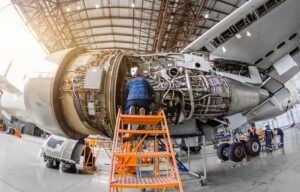ARIA UK: how to engage with breakthrough funding in 2026
4 min read
ARIA UK funds high-risk, high-reward R&D through agile programmes run by entrepreneurial Programme Directors. Here is how ARIA works, who can apply, and where to find live opportunities.
Introduction
If your project sits at the edge of what is technically possible, ARIA UK may be a fit. The agency backs bold research through focused programmes and seed funding, aiming for transformative impact rather than incremental advances. It operates independently as a non-departmental public body sponsored by DSIT.
The Advanced Research and Invention Agency (ARIA)is the UK’s “high-risk, high-reward” funder, legislated by the ARIA Act and initially endowed with an £800 million budget to catalyse breakthrough science and technology. Its model is inspired by ARPA/DARPA, prioritising agility, empowered programme leaders and tolerance for failure when pursuing outsized outcomes.
ARIA’s remit is to pursue projects with potential for paradigm shifts across science and engineering, operating with minimal bureaucracy compared to traditional schemes.
How ARIA funding works
- Opportunity spaces. Programme Directors define “opportunity spaces” where new talent, ideas or tools could unlock step-changes, from bio-energy and neurotech to safe AI and climate resilience.
- Programmes and seeds. Within each space, ARIA runs multi-year programmes and issues seed grants to test risky concepts quickly.
- Entrepreneurial leadership. Programme Directors have autonomy to shape technical goals, commission projects, and iterate rapidly, aiming for translational impact.
- Lightweight process. ARIA emphasises lean processes and fast decisions so teams can focus on discovery and build momentum.
Eligibility at a glance
ARIA is open to diverse teams across academia, startups, and industry, deliberately spanning disciplines and institutions.
Who can apply
- Mixed consortia or single organisations from academia, industry or non-profits, selected for the ability to deliver breakthroughs.
- Interdisciplinary proposals are encouraged, reflecting the cross-cutting nature of ARIA’s programmes.
Typical expectations
- High technical ambition with credible paths to test bold hypotheses.
- Willingness to share learning quickly, accept risk, and adapt to programme direction.
Funding scope and current calls
- Costs covered:ARIA funds research and development activities aligned to programme goals. Contract specifics vary by call, but the focus is on enabling speed and iteration rather than prescriptive cost categories.
- Scale: Public reports confirm substantial multi-year public investment, with allocations managed at programme level.
Example live opportunity (October 2025):
- Precision Mitochondria — Concept Papers. A programme backed by at least £55 million to make the mitochondrial genome programmable in vivo, inviting concept papers by 27 October 2025.
Market context: why ARIA matters now
The UK has positioned ARIA to complement mainstream research councils by taking bigger technical swings, especially in areas like synthetic biology, neurotechnology, materials and climate tech. Recent coverage highlights expansion in life-science-led programmes and healthy-ageing, with multiple new Programme Directors appointed in 2025.
Annual reports show ARIA moving from startup phase to operational delivery, with maturing governance and an expanding portfolio.
Application process: step-by-step
- Scan the ARIA website. Check Opportunity spaces and the Funding section for open calls and seeds.
- Read applicant guidance. Understand expectations on ambition, interdisciplinarity and fast iteration.
- Draft a concise concept. Articulate the breakthrough, key technical hurdles, fast-learn experiments, and measurable waypoints.
- Assemble the team. Combine principal investigators, engineers and operators who can pivot quickly as the programme evolves.
- Submit on the portal or via call-specific process. Follow the stated format and timeline for the programme in question.
- Engage with the Programme Director. Be ready to refine scope, join cohort activities and share interim learning.
Common CFO questions and practical mitigations
- Risk vs return: Model scenarios where early failure de-risks later capex. Link technical milestones to go/no-go gates.
- IP and contracting: Clarify background and arising IP, publication norms and transition to follow-on development early.
- Blending finance: Map ARIA grants alongside private capital or other public instruments. Maintain a clean audit trail to simplify later due diligence.
- Team capacity: Resource for rapid experiments and data management, not just paper plans.
FI Group insight
Industry briefings from FI Group emphasise the importance of aligning proposals to the specific opportunity space and demonstrating credible pathways from lab insight to scalable invention. This includes early thinking on manufacturability, regulation and clinical or field validation where relevant
FAQs
What is ARIA UK in simple terms?
An independent UK agency that funds bold, high-risk research through programme-led calls run by empowered Programme Directors.
Who can apply for ARIA?
Academics, startups and established companies, often in mixed teams that cut across disciplines and sectors.
Where do I find current opportunities?
On ARIA’s website under Opportunity spaces and Funding, where live programme pages list aims, dates and how to submit concept papers.
How big are awards?
Programme envelopes vary. As an example, the Precision Mitochondria call is backed by at least £55 million for the programme.
How is ARIA different from Innovate UK?
ARIA focuses on fewer, riskier bets with entrepreneurial programme leadership and lighter processes, while Innovate UK runs broader competitive grant schemes.






